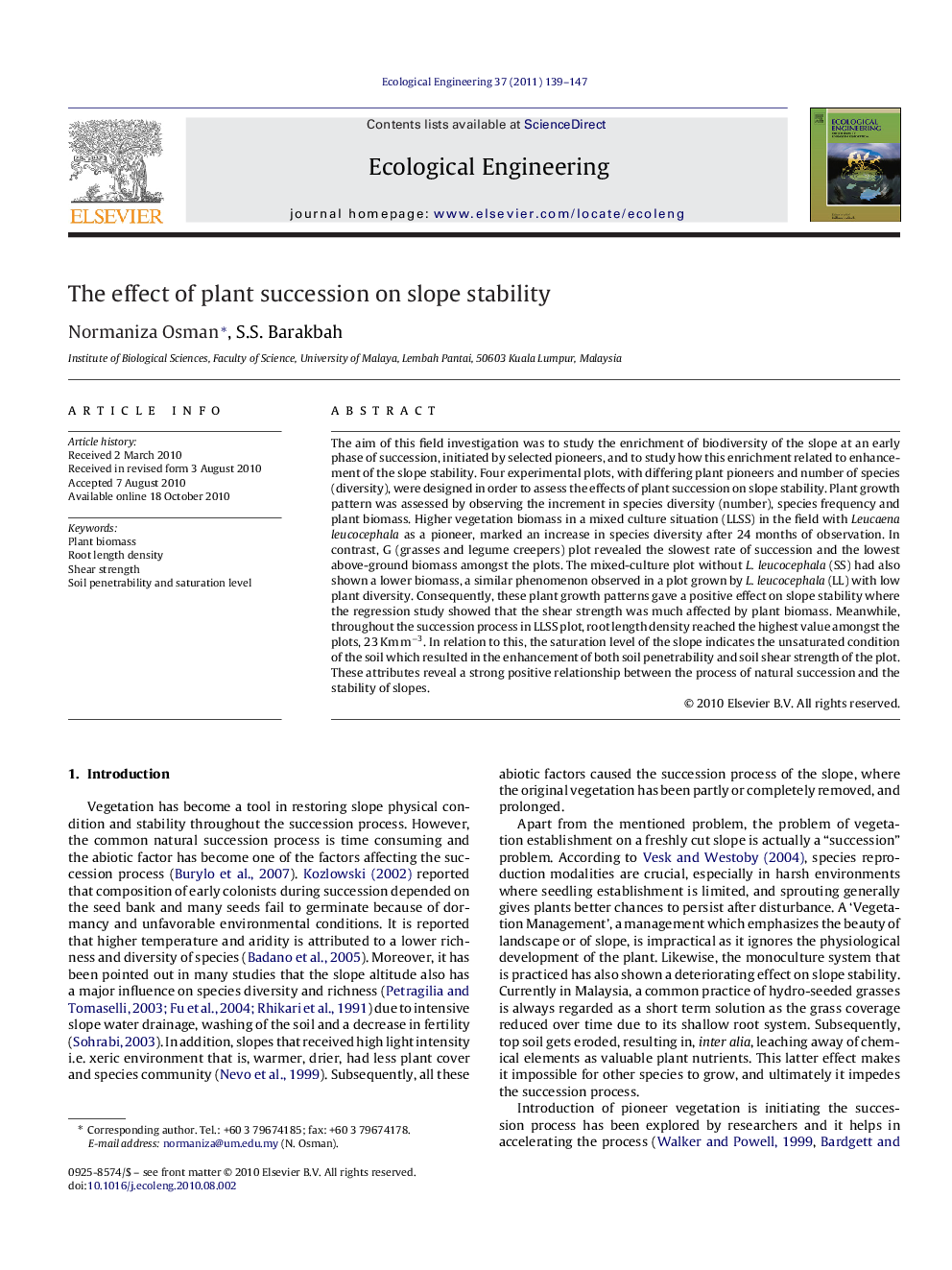| Article ID | Journal | Published Year | Pages | File Type |
|---|---|---|---|---|
| 6302825 | Ecological Engineering | 2011 | 9 Pages |
The aim of this field investigation was to study the enrichment of biodiversity of the slope at an early phase of succession, initiated by selected pioneers, and to study how this enrichment related to enhancement of the slope stability. Four experimental plots, with differing plant pioneers and number of species (diversity), were designed in order to assess the effects of plant succession on slope stability. Plant growth pattern was assessed by observing the increment in species diversity (number), species frequency and plant biomass. Higher vegetation biomass in a mixed culture situation (LLSS) in the field with Leucaena leucocephala as a pioneer, marked an increase in species diversity after 24 months of observation. In contrast, G (grasses and legume creepers) plot revealed the slowest rate of succession and the lowest above-ground biomass amongst the plots. The mixed-culture plot without L. leucocephala (SS) had also shown a lower biomass, a similar phenomenon observed in a plot grown by L. leucocephala (LL) with low plant diversity. Consequently, these plant growth patterns gave a positive effect on slope stability where the regression study showed that the shear strength was much affected by plant biomass. Meanwhile, throughout the succession process in LLSS plot, root length density reached the highest value amongst the plots, 23 Km mâ3. In relation to this, the saturation level of the slope indicates the unsaturated condition of the soil which resulted in the enhancement of both soil penetrability and soil shear strength of the plot. These attributes reveal a strong positive relationship between the process of natural succession and the stability of slopes.
